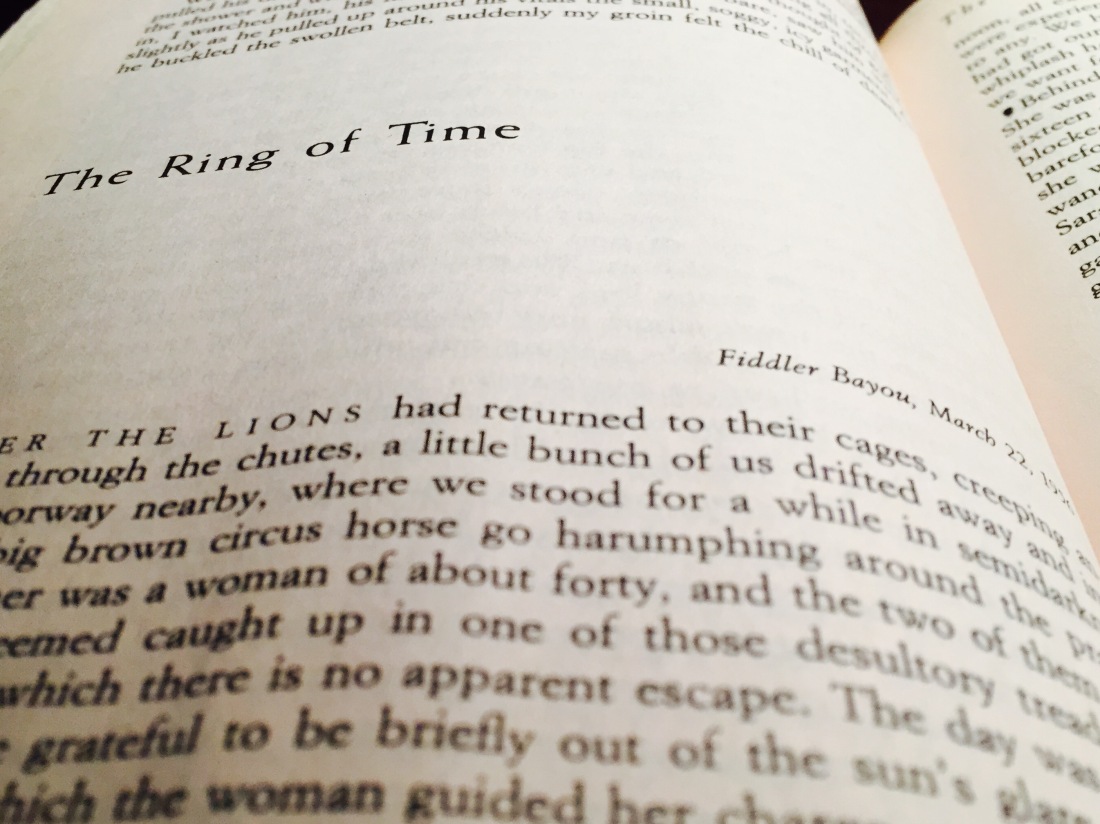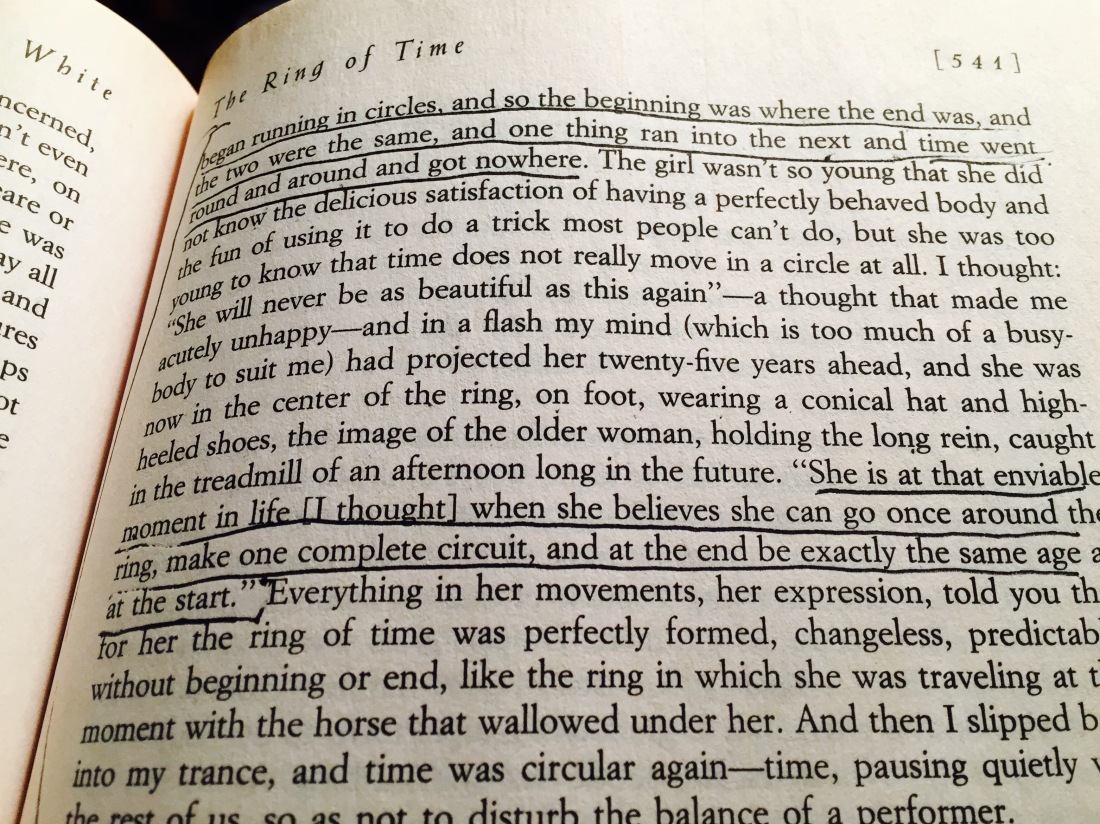
A few days ago I reported and wrote one of the only front-page stories I’ve done since being named editor. The story isn’t particularly flashy or sexy. But it took research, reading, real-life conversations with people, and it took a fair amount of work to understand its intricacies before I could actually write the thing. Last September I put together another, even more complex piece that I spent days reporting before ever putting words to a page.
And that’s what I love.
It was the writing that convinced me to get into this work in the first place.
Newspaper journalism can be a pretty rigid form to write within (though it doesn’t have to be all the time), and as one of my mentors, Dr. Beth Impson, used to tell us in our college classes, writing within a certain form with certain rules is one of the best ways to master the basics of the form itself. Few poets come out of the gate writing freeform and produce anything worth a damn. Newspaper writing — with its emphasis on wasting no time in getting to the juicy parts — has taught me much about not using a single word more than is needed to serve the reader.
And serving the reader is what it’s all about, after all.
I will always remember when I was introduced to the personal essay in Dr. Impson’s Advanced Prose course. In that class I discovered an essay by E.B. White, of Charlotte’s Web fame, but who also literally wrote the manual on good writing when he rehashed Elements of Style.
In a compilation of essays, I found White’s “The Ring of Time,” in which he spends several pages describing parts of a circus in the 1950s, particularly a teenage horse rider as she loses herself in her relatively simple performance.
In another Impson class the next year, Advanced Grammar, I chose an excerpt of the White essay for a grammatical analysis paper. It’s hard to help people who don’t like or don’t “get” grammar understand why things like syntax and punctuation are so important when used to serve the message. From White’s essay:
“As I watched with the others, our jaws adroop, our eyes alight, I became painfully conscious of the element of time. Everything in the hideous old building seemed to take the shape of a circle, conforming to the course of the horse. The rider’s gaze, as she peered straight ahead, seemed to be circular, as though bent by force of circumstance; then time itself began running in circles, and so the beginning was where the end was, and the two were the same, and one thing ran into the next and time went round and around and got nowhere. The girl wasn’t so young that she did not know the delicious satisfaction of having a perfectly behaved body and the fun of using it to do a trick most people can’t do, but she was too young to know that time does not really move in a circle at all. I thought: ‘She will never as beautiful as this again’ — a thought that made me acutely unhappy — and in a flash my mind (which is too much of a busybody to suit me) had projected her twenty-five years ahead, and she was now in the center of the ring, on foot, wearing a conical hat and high-heeled shoes, the image of the older woman, holding the long rein, caught in the treadmill of an afternoon long in the future. ‘She is at that enviable moment in life [I thought] when she believes she can go once around the ring, make one complete circuit, and at the end be exactly the same age as at the start.’”

White makes his prose sing, and he bends the structure of his sentences to meet his theme: time, like his clauses here, go round and round, one blending into the beginning of the next. Words repeat or vary, so the reader hears the same root, the same rhythm, over and over, until White is ready to end his thought — and complete his image. White’s explicit point here is to describe this scene he lost himself in, but the implicit point is to highlight this moment for this young girl in which she has lost herself inside of what she’s doing, and the joy she takes from the act itself. The world beyond the circle — beyond that moment in time — is gone for her. And because she’s performing with enraptured ignorance, her audience (or at least White) is lost in the wonderment too.
I can’t help but think White knew that he was doing the same thing with his writing here: doing it so well that he was lost in it, as the girl was, that in a passage like this one, he had mastered the language so well as to bend it to serve his.
The writing sings because the writer makes it sing. And he does it without fear.
Stephen King’s fiction has never been my flavor. I’ve never read any of his novels, and my first experience with him was when my dad let me watch the TV miniseries version of It! when — I’ve since been told — I was far too young. A clown who devours children whole after scaring the heeby-jeebies out them is probably a bit much for a 5-year-old. Pennywise the clown still shows up now and then in my dreams.
But King’s On Writing is one of the best works on the craft I’ve read. He breaks down nearly everything a curious reader wants to know about how he works. Pithy tips abound for writers of all sorts.
In his diatribe against the adverb (those clunky –ly modifiers), King insists writers typically use them when they’re scared that either the reader isn’t smart enough to understand what’s in the text, or that the writer wasn’t skilled enough in communicating. Either way, the adverb is almost always a sign of fear. “I’m convinced that fear is at the root of most bad writing,” King says. And later: “Good writing is often about letting go of fear and affectation.”
The good stuff shows no sign of fear. White wasn’t afraid when he jaunted down the rhetorical path he did in “the passage above”The Ring of Time.” He had an idea, and he executed the idea on the page. And the best part: the reader — if he’s really watching, if he’s willing to analyze the restrictive and non-restrictive clauses, all the coordinating conjunctions, the diction, the rhythm — enjoys it and is served.
One of the greatest living writers is Annie Dillard. I had never heard of her until I studied under Dr. Impson. Once you read Dillard, it’s impossible not to be haunted by her ability to embody the mundane with meaning and story. Her words resuscitate the images we glide by each day, never noticing the life teeming from them. In a piece Dr. Impson recently passed on to me, Dillard says:
“Capturing the typical isn’t a virtue. Only making something new and interesting is. If you find life dull and people hateful, keep thinking until you can see it another way. Why would any reader pick up a book to read a detailed description of all that is most annoying in his daily life?
Dillard does that, and so does White in “The Ring of Time.” This is what makes the stuff worth reading worth reading. The same is true of journalism. I often ask our reporters what the “so what?” of each story is.
So what if a teenager can ride a horse in a circle? So what if a chemical plant in your backyard is delayed by months and lawsuits?
So what if I remember why I love writing?
So what?
“Write for readers,” Dillard says. “Ask yourself how every sentence and every line will strike the reader. That way you can see if you’re misleading, or boring, the reader.”
Whether it’s the hard news story on the front page of the paper or the eloquent essay tucked in the middle of a college textbook — or the long blog post — our job is always to serve the reader. Never just ourselves.
Good read!
>